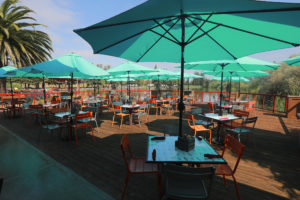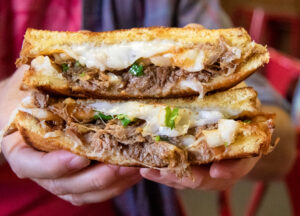 As a rule, I wince when I hear the words artisanal and Pinot Noir in the same sentence, conjuring as they do the pretension of restaurants that proclaim “house-made” and people who’ve watched the movie Sideways more than once. But exceptions prove rules, and every so often I’m lucky enough to be reminded of the origins of the term, the idea that wine-making is as much craft as science, and that small lots, made by hand, with obsessive attention to detail, can transcend the hegemony of critics and their point ratings.
As a rule, I wince when I hear the words artisanal and Pinot Noir in the same sentence, conjuring as they do the pretension of restaurants that proclaim “house-made” and people who’ve watched the movie Sideways more than once. But exceptions prove rules, and every so often I’m lucky enough to be reminded of the origins of the term, the idea that wine-making is as much craft as science, and that small lots, made by hand, with obsessive attention to detail, can transcend the hegemony of critics and their point ratings.
Herewith, I humbly submit Exhibit A for the defense: Eric 1 and Eric 2, two dudes who comprise 2/3 of the diminutive RoadHouse Winery workforce, and who seem to insist on making tiny hand-crafted lots of exceptional Pinot Noir without cutting corners, no matter how diabolical the economics or difficult the labor. One might, if one were so affected, be tempted to call them artisans.
It’s worth noting that, while the word artisan has been in decline since the beginning of the Industrial Revolution, the word artisanal only entered the published lexicon in the early 1960s and, with more than a little irony, that the recent and meteoric rise in our usage of the latter has coincided with a precipitous decline in that of the former. To wit, I graphed the published incidence of both words over the past half-century, using Google Labs’ awesome Ngram: Surely, there’s a lesson there, something about the incessant marketing of “artisanal” products in the late 20th century occurring in parallel with the near extinction of “artisan” as a career… but I digress. This is artisanal wine-making, RoadHouse-style: To produce their first vintage, the winery staff – all 3 of them – shared a little studio above the production facility, so they could take turns running downstairs to do manual punch-downs, continuously, every 4 hours. Or this: I found out about these guys because my wife has a childrens’ dance studio, Wine Country Dance Space, down the street from their original tasting room, and it was hard not to notice a tasting room that allocates floor space to a pool table in lieu of tables of cheesy merchandise (you can get a cool T-shirt, although unfortunately not a rack of 8-ball, at their new facility by the Healdsburg Plaza).
Surely, there’s a lesson there, something about the incessant marketing of “artisanal” products in the late 20th century occurring in parallel with the near extinction of “artisan” as a career… but I digress. This is artisanal wine-making, RoadHouse-style: To produce their first vintage, the winery staff – all 3 of them – shared a little studio above the production facility, so they could take turns running downstairs to do manual punch-downs, continuously, every 4 hours. Or this: I found out about these guys because my wife has a childrens’ dance studio, Wine Country Dance Space, down the street from their original tasting room, and it was hard not to notice a tasting room that allocates floor space to a pool table in lieu of tables of cheesy merchandise (you can get a cool T-shirt, although unfortunately not a rack of 8-ball, at their new facility by the Healdsburg Plaza).
 Most of their first vintage – 2008 – has been sold out for a while now (they still have a little of their ’08 Russian River Pinot Noir and Dry Creek Zinfandel), but that’s OK, because the Erics are already pouring their exceptional 2009s, and will release them on April 1st. I tasted three ’09 bottlings, each sourced from a prime, but distinct, micro-climate within the Russian River AVA, and each of which offered a wonderfully unique expression of the region.
Most of their first vintage – 2008 – has been sold out for a while now (they still have a little of their ’08 Russian River Pinot Noir and Dry Creek Zinfandel), but that’s OK, because the Erics are already pouring their exceptional 2009s, and will release them on April 1st. I tasted three ’09 bottlings, each sourced from a prime, but distinct, micro-climate within the Russian River AVA, and each of which offered a wonderfully unique expression of the region.
RoadHouse eschews “reserve” and “single vineyard” designations, preferring instead simply to make the best and most individually compelling wines they can, barrel by barrel, blend by blend, and only differentiates by the color of the label: The minimalist 2009 lineup includes a Yellow (from a variety of fruit sources), Purple (from the Windsor area, just east of Old Redwood Highway), and Black (from more westerly sites along River Road); they’re all offered at $40 pre-release, and they are all very, very good. Interestingly, although made in identical fashion (the same gentle handling, old-school techniques, and 18mo-snooze in French oak), they all have individual personalities, too, and that, as either Eric will tell you, is the whole point. If juicy, forward bright red fruits are your thing, check out the Purple, although my personal favorite, hands-down, was the Black Label, a rich slice of black forest cake in a glass, thick with black cherries, vanilla, and a darker, brooding side that I can’t quite put my finger on, but which reminds me just a little of a fine northern Burgundy, the slightest hint of the sauvage…
If juicy, forward bright red fruits are your thing, check out the Purple, although my personal favorite, hands-down, was the Black Label, a rich slice of black forest cake in a glass, thick with black cherries, vanilla, and a darker, brooding side that I can’t quite put my finger on, but which reminds me just a little of a fine northern Burgundy, the slightest hint of the sauvage…
RoadHouse Winery Tasting Room, 240 Center Street, Healdsburg. Very highly recommended.
View Larger Map









